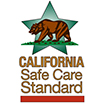To find laws and regulations for California and nationally, here are links to California’s Codes of Law and Code of Regulation.
The California Division of Occupational Safety and Health (Cal/OSHA) Program is responsible for enforcing California laws and regulations pertaining to workplace safety and health and for providing assistance to employers and workers about workplace safety and health issues. The Cal/OSHA Enforcement Unit conducts inspections of California workplaces based on worker complaints, accident reports, and high hazard industries.
You may file complaint about a hazard in your workplace by calling the Cal/OSHA district office that serves the location of your job site, preferably during business hours. If you cannot call during business hours, you may also call during off hours. If you cannot call at all, you may e-mail your complaint to the respective district office.
DLSE adjudicates wage claims on behalf of workers who file claims for nonpayment of wages, overtime, or vacation pay, pursuant to California Labor Code sections 96 and 98. DLSE deputies hold informal conferences between employers and employees to resolve wage disputes. If a matter cannot be resolved at the informal conference, an administrative hearing is held to make a final determination on the matter.
Employees and applicants for employment in California have the right to exercise their labor rights without retaliation or discrimination. The Labor Commissioner’s Office enforces more than 45 labor laws that specifically prohibit discrimination and retaliation, including Equal Pay Act violations.
Every employee has a reasonable expectation to be safe at work. Effective July 1, 1991, every employer must establish, implement, and maintain an effective Injury and Illness Prevention Program.
Occupational Safety and Health Administration (OSHA). Under the federal OSH Act, employers are responsible for providing a safe and healthful workplace. OSHA’s mission is to assure safe and healthful workplaces by setting and enforcing standards, and by providing training, outreach, education, and assistance. Employers must comply with all applicable OSHA standards.
California adopted a state ergonomic standard on November 14, 1996. The standard provides that when at least two employees performing identical tasks have been diagnosed by a physician with repetitive motion injuries (RMIs) within 12 consecutive months, the employer must establish a program.
The Centers for Disease Control (CDC) mission is to collaborate to create the expertise, information, and tools that people and communities need to protect their health – through health promotion, prevention of disease, injury and disability, and preparedness for new health threats.
National Institute for Occupational Safety (NIOSH) provides national and world leadership to prevent workplace illnesses and injuries. The mission of NIOSH is to generate new knowledge in the field of occupational safety and health and to transfer that knowledge into practice for the betterment of workers.
The Institute of Medicine (IOM) is an independent, nonprofit organization that works outside of government to provide unbiased and authoritative advice to decision makers and the public. The IOM asks and answers the nation’s most pressing questions about health and health care. Founded in 1970 as the Institute of Medicine (IOM), the National Academy of Medicine (NAM) is one of three academies that make up the National Academies of Sciences, Engineering, and Medicine (the National Academies) in the United States. Operating under the 1863 Congressional charter of the National Academy of Sciences, the National Academies are private, nonprofit institutions that work outside of government to provide objective advice on matters of science, technology, and health.
Did you like this? Share it:


